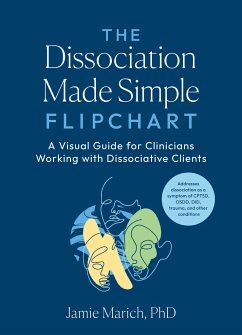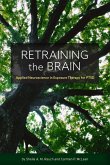An essential resource for psychologists, therapists, and clinicians to help clients understand dissociation, make sense of their parts, and visualize depersonalization and derealization—a stigma-free guide from the bestselling author of Dissociation Made Simple An interactive dry-erasable tool for use with clients with dissociative identity disorder (DID), complex trauma, PTSD, and dissociative disorders not otherwise specified (DDNOS) This easy-to-use, dry-erasable flip chart helps therapists break down the basics of dissociation: what it is, why it happens, and how it can be understood—and embraced—as a key part of your client’s healing journey. The full-color Dissociation Made Simple Flipchart builds on Jamie Marich, PhD’s, bestselling book and expands your clinical toolkit. Designed to be interactive and user-friendly in-session, it offers easy-to-understand definitions, unique client-centered exercises, flexible language options, and visual activity pages thoughtfully illustrated to meet the needs of clients with different learning styles. Use the Flipchart with clients to: * Understand—and go beyond—dissociation and trauma 101 * Show how trauma acts on the body and brain * Demystify terms like “parts,” “system,” and “alter” * Build their “safe-enough” harbor * Relate to real-life examples from people with dissociative experiences * Understand treatment options and different approaches to dissociative symptoms * Practice techniques for grounding, anchoring, settling, and mindfulness * Do interactive activities like mapping their parts * Challenge myths, biases, and stigma * Learn about their dissociative tendencies—and discover what helps them return to the present moment For use with clients with trauma-related dissociation, dissociative identity disorder, DDNOS, and more, the Flipchart is a compassionate and invaluable clinical resource that helps you explore complex concepts with ease—demystifying dissociation and providing a roadmap to understanding, agency, and empowerment.








